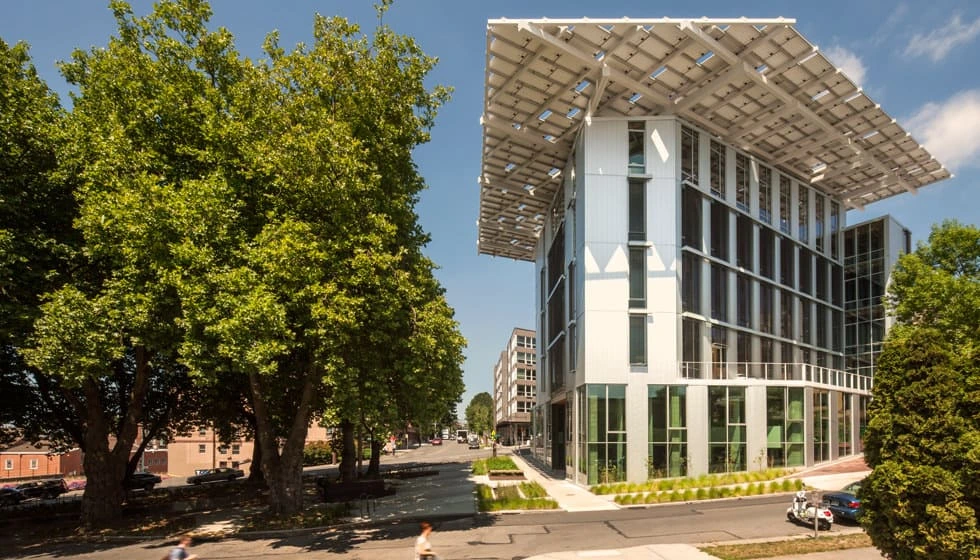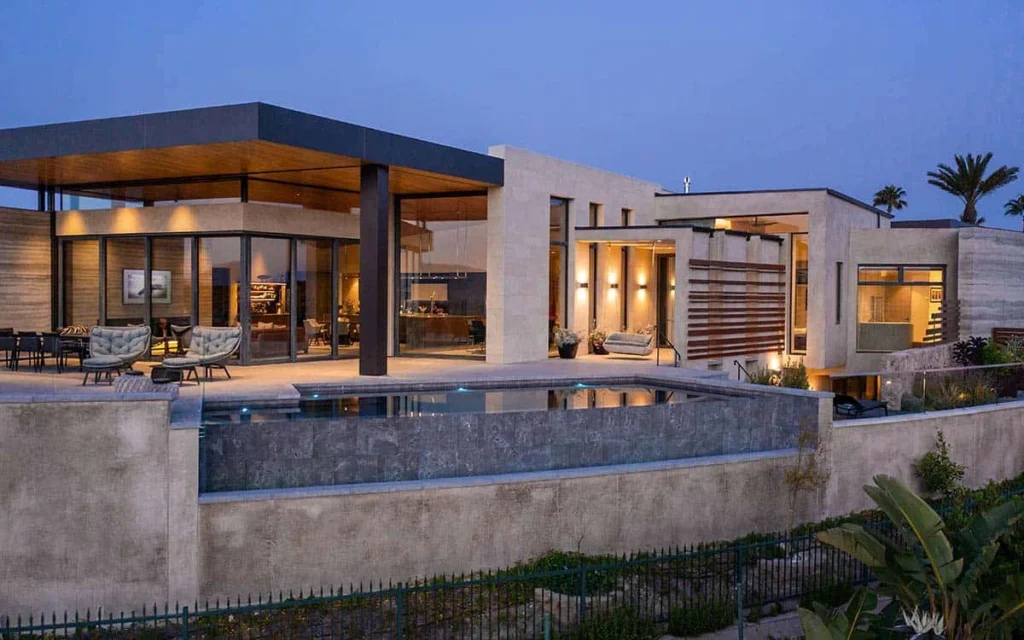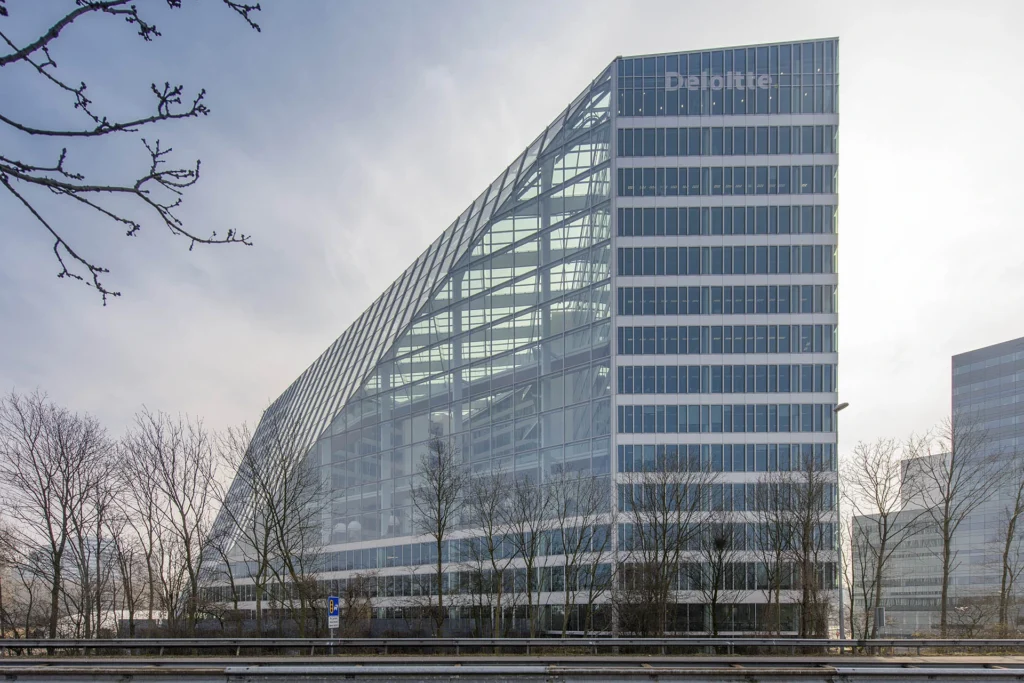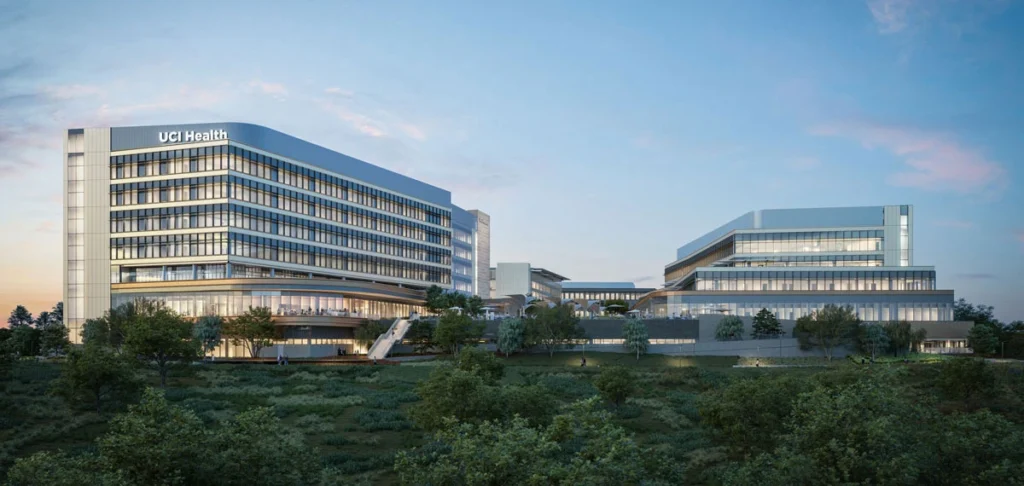Last Updated: February 6, 2025
With energy costs rising and environmental concerns top of mind, more people are turning to net zero buildings as a smart solution. These buildings produce as much energy as they use, meaning they’re not just good for the planet, they’re great for your wallet too.
Whether you’re building a new home or designing an office, net zero buildings are making it easier than ever to save on energy bills while doing your part to reduce carbon emissions.
Let’s break down what makes these buildings so special and why they’re becoming a popular choice in construction today.
Table of Contents
What is a Net Zero Building?
A net zero energy building (NZEB) generates enough renewable energy to cover its entire energy use. Unlike traditional buildings that rely on outside energy sources, NZEBs maximize efficiency with high-performance insulation, advanced HVAC systems, and on-site renewable energy production.
In short, a net zero building is a structure that produces as much energy as it consumes annually by combining energy-efficient design, renewable energy sources, and smart energy management.
Net Zero vs. Green Buildings
You might be wondering — how is a net zero building different from a green building? While green buildings focus on sustainability by using eco-friendly materials and efficient resources, net zero buildings go a step further. They ensure that the total energy consumed equals the energy generated, meaning zero net energy use.
How Does a Net Zero Building Work?
A net zero building works by balancing the energy it uses with the energy it produces. To achieve this, several key strategies come together to maximize efficiency and sustainability.
1. Smart Design from the Start
It all begins with the design. Net zero buildings are designed to take advantage of natural light and fresh air. With features like large windows, proper shading, and ventilation, these buildings need less energy for lighting and cooling.
2. Good Insulation for Comfort
To keep things comfortable without using too much energy, a net zero building has great insulation. This keeps the heat in during the winter and out in the summer, so you don’t need to rely on heaters and air conditioners as much.
3. Energy-Efficient Systems & Appliances
Every part of the building works to save energy. It uses things like energy-efficient HVAC systems, LED lights, and smart appliances. Motion sensors and smart thermostats even adjust automatically to save power when no one is around or when it’s not needed.
4. Generating Its Own Power
A net zero building creates its own energy through things like solar panels, and sometimes even wind turbines or geothermal systems. This helps the building produce as much power as it needs, without relying on the grid.
5. Smart Energy Management
Technology helps track energy use in real-time. With smart meters and battery storage, excess energy is saved for later or sent back to the grid, making sure energy is used wisely and efficiently.
6. Water & Waste Efficiency
A net zero building also saves water. Many buildings collect rainwater, reuse greywater (water from sinks and showers), and use efficient plumbing systems to reduce waste. Some even use composting toilets or systems that turn waste into energy.
7. Everyday Habits Make a Difference
Even with all the high-tech features, it’s the people living or working in the building who make it truly sustainable. Simple habits like turning off lights when not in use or unplugging devices can help keep energy use low.
By combining smart design, energy-saving systems, and renewable energy, a net zero building creates a comfortable, green space for everyone.
Check out: 12 Proven Ways to Reduce Construction Costs Without Sacrificing Quality
How to Build a Net Zero Building (Step-by-Step Guide)
Step 1: Choose the Right Site and Design
Choose a location with lots of sunlight to make the most of solar energy. Make sure the building is designed with things like natural shading and ventilation to keep it comfortable without needing too much heating or cooling.
Step 2: Use High-Performance Materials
Investing in high-quality insulation is very important. It will help you keep the heat in during the winter and out during the summer. You’ll also want to focus on airtight construction, as small gaps can waste a lot of energy. Building with sustainable materials also reduces the overall environmental impact, making your project greener from the start.
Step 3: Install Renewable Energy Systems
Solar panels are the most common choice for net zero buildings, providing an effective and renewable energy source. Depending on your location, wind turbines can also be a great option if you have consistent winds. Geothermal systems are another smart choice for heating and cooling, using the earth’s natural heat to keep the building comfortable year-round.
Step 4: Optimize Energy Management and Storage
Use smart meters and storage systems to track and manage energy use. This way, any extra energy generated can be stored and used when needed, so you don’t have to rely on the grid.
Step 5: Meet Certification Standards
To officially call your building a net zero building, follow LEED (Leadership in Energy and Environmental Design) or other certification guidelines. These standards will ensure you’ve met all the necessary requirements for energy efficiency. Plus, being certified can help you take advantage of tax incentives and rebates, so it’s worth the extra effort.
By following these steps, you can build a space that not only minimizes energy use but also contributes positively to the environment.
How Much Does It Cost to Build a Net Zero Building?
Building a net zero building can cost anywhere from $200 to $400 per square foot, depending on factors like size, location, and materials. The higher cost comes from the energy-efficient features, such as top-notch insulation and renewable energy systems like solar panels.
While it might seem expensive at first, you’ll make up for it in savings. Over time, you could save 50-80% on your energy bills. So, while you pay more upfront, those savings really add up in the long run.
On top of that, there are financial incentives available to help lower your costs. Many governments offer tax credits, solar incentives, and grants, which can make building a net zero building more affordable than you might think. So, in the end, you’re investing in both savings and sustainability.
Benefits of Net Zero Buildings
Lower Energy Bills
One of the most immediate benefits of a net zero building is the significant reduction in energy costs. With energy-efficient features and renewable energy systems, these buildings can cut your utility bills by 50-80% over their lifetime, helping you save money while reducing your reliance on external energy sources.
Sustainability & Carbon Reduction
Net zero buildings play a critical role in reducing greenhouse gas emissions. By generating their own renewable energy and minimizing energy waste, these buildings lower the reliance on fossil fuels and help protect the environment. This contributes to a cleaner, greener planet, reducing the carbon footprint of the building’s occupants.
Increased Property Value
Homes and buildings that are energy-efficient tend to have higher resale values. As more buyers seek sustainable, cost-efficient living spaces, net zero buildings stand out in the real estate market. Investing in energy-efficient features not only saves money but can also provide a higher return on investment when it’s time to sell.
Improved Comfort & Air Quality
Net zero buildings are designed for optimal comfort, with airtight construction and advanced ventilation systems. These features keep indoor temperatures stable, ensuring a comfortable environment year-round. Additionally, the focus on ventilation and using natural light promotes better indoor air quality, which can enhance the well-being of the building’s occupants.
Long-Term Savings
Although building a net zero structure comes with a higher upfront cost, the long-term savings are substantial. From energy savings to lower maintenance costs, the financial benefits grow over time. As energy prices rise, the savings you enjoy become even more valuable, making a net zero building a smart financial decision in the long run.
Pride & Purpose
Owning or occupying a net zero building gives you the satisfaction of knowing that you’re contributing to sustainability. Beyond financial savings, it’s a chance to make a positive impact on the environment. By reducing energy waste and lowering carbon emissions, you can take pride in knowing your building supports a healthier, more sustainable future.
Common Myths About Net Zero Buildings (Debunked!)
- “Too Expensive” – ROI proves that net zero buildings pay for themselves over time.
- “Only for New Construction” – Retrofit options allow existing buildings to go net zero.
- “Not Practical in Cold/Cloudy Areas” – Passive solar design and energy-efficient systems optimize performance in any climate.
Net Zero Building Examples
Real-world examples show that net zero buildings can work in different settings and climates. Here are five inspiring case studies that highlight how these buildings succeed in real life:
Residential Net Zero Homes

A great example of a residential net zero home is the Living Building Challenge Home in Washington State. This home is completely energy independent, generating all its energy with solar panels and wind turbines. It also collects rainwater and treats its own wastewater.
Thanks to smart insulation and natural ventilation, homeowners here don’t pay utility bills, proving that a home can be both sustainable and comfortable while cutting energy costs to zero.
Commercial Net Zero Buildings

The Bank of America Tower in New York City is a top example of a net zero commercial building. This office tower uses solar energy, energy-efficient cooling systems, and smart lighting to reduce its energy needs.
The building also includes a solar thermal system to generate energy on-site, helping to lower operational costs. It’s a clear example that big buildings can be energy-efficient while saving money in the long run.
Government & Public Net Zero Projects

The Bullitt Center in Seattle is often called the “greenest commercial building in the world.” Designed to meet the highest sustainability standards, this building produces all its energy with 575 solar panels and uses advanced energy-efficient systems. It also collects and recycles rainwater.
The Bullitt Center is a powerful example of how government and public buildings can lead the way in sustainability, showing that energy-efficient buildings are possible for everyone, not just private companies.
Residential Net Zero Building: The ZNE House in California

Imagine living in a home where you don’t have to pay electricity bills. That’s what the ZNE House in California is like. It uses solar panels to create enough energy to power everything inside. Plus, with great insulation and energy-saving appliances, the house stays comfortable without using too much power.
It even collects rainwater, saving water and making the house eco-friendly while saving you money.
Commercial Net Zero Building: The Edge in Amsterdam

The Edge is an office building in Amsterdam that runs entirely on renewable energy, thanks to solar panels. Inside, it has smart systems that help save energy, like lights and heating that adjust automatically.
This building shows that even large offices can be energy-efficient, cutting down on energy bills and helping the environment at the same time.
Educational Net Zero Building: UC Irvine’s New Building

At the University of California, Irvine, one of their new buildings produces as much energy as it uses, thanks to solar panels. It’s designed with features like smart energy systems and good insulation to reduce energy waste.
The building also collects rainwater and has green roofs, making it a great example of how schools can use sustainable designs to save energy and help the planet.
These examples show that whether it’s a home, office, or school, anyone can create a space that saves energy and reduces bills, all while being kind to the environment.
Is Net Zero Building Right for You?
Going net zero isn’t just for big corporations or new builds. With the right planning, anyone can achieve energy independence and long-term savings.
Builtfront: Your Partner in Net Zero Construction
Building a net zero home takes smart planning and precise cost management. That’s where Builtfront helps:
- Track Costs – Stay on budget with real-time tracking.
- Optimize Workflows – Improve project efficiency.
- Manage Resources – Plan materials and energy use effectively.
Want to make net zero construction easier? Try Builtfront, your all-in-one tool for cost tracking, and project management.

